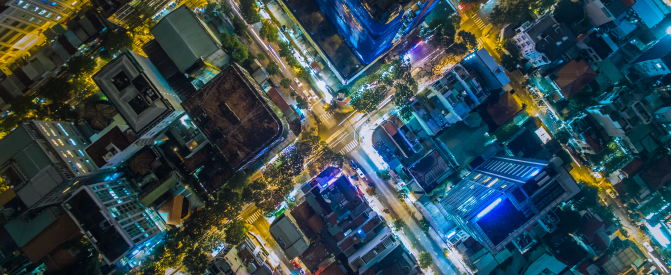Smart Cities
Roughly 70% of the world’s population will be living in cities by 2050. And by that time, according to the International Data Corporation (IDC), close to eight out of 10 South Africans will be living in one of our major cities. The result of this kind of growth is immense.
An increased population will create a surge of traffic and pollution that will ultimately create an environment that is unsustainable and inefficient to live in. By using technology we can intelligently create cities (known as Smart Cities) to enable us to drive efficiencies and address limitations at the same time.
Wikipedia explains that a “Smart City is an urban development vision to integrate information and communication technology (ICT) and Internet of things (IoT) technology in a secure fashion to manage a city’s assets”. What this means is, that a Smart City’s ultimate aim is to provide an enriched quality of life for all its residents and deliver tangible benefits at a national, provincial and municipal level whilst leveraging its natural resources wisely.
Different cities will have different needs however, and the journey of becoming “Smart” will depend entirely on these needs.
In South Africa, we have what are called Transitioning Cities – large established entities that are experiencing rapid development and population growth. Implementation and provisioning of infrastructure as well as the strategic planning and associated funding are key drivers and challenges for these kinds of cities, we can already see the start of this growth and the resultant transformation.
In Johannesburg, remote controlled smart meters have replaced traditional electricity meters in certain areas. And in Braamfontein, Wi-Fi and high-speed broadband has been rolled out and CCTV cameras upgraded and systems implemented that can allow for excess energy to be fed back into the grid. In Cape Town, there is free Wi-Fi on MyCiti buses and public Internet access running in the City’s buildings as well as other locations. Perhaps we will soon see remote monitoring of water consumption too in attempts to combat the drought?
None of above would be possible without the rollout of fibre optic infrastructures, which are essential in establishing a smart city’s foundation and the support of South African companies and service providers.
By connecting your home (FTTH) and/or business (FTTB) to high-speed broadband and providing Virtual Data Centres (VDC) where you can manage and store your data – RSAWEB is one such company that is supporting our road towards establishing South Africa’s Smart Cities.
And if you want an extra heads up on what its like to live in a Smart City read, A day in the life of a Smart City commuter – and why it’s not so far from reality, for an excellent glimpse into our very near future.
Follow RSAWEB on Facebook, Twitter and LinkedIn for the latest industry news and technology insights.



